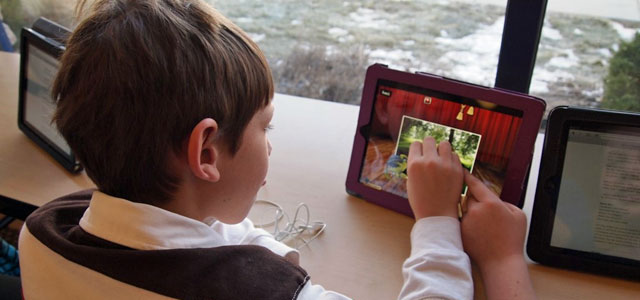“If we are not teaching the kids to use the web as a vehicle for enhancing learning and teaching them to be the filter, that’s a dereliction of duty,” Luhtala said. One good way to put students through a meaningful, rigorous experience of analyzing source validity is with an annotated bibliography. Students have to not only summarize the source’s importance, but also evaluate its validity. Here are some data points Luhtala teaches students to identify.
- Identifying features: maps, graphs, documents, reprints etc.
- Scope: Is the source broad like an encyclopedia entry or does it go deeply into a subject? When researching, start broad and narrow along the way.
- Sources: Does the article references where the information came from?
- Reliable: What’s a legitimate news source? Look for clues in layout, author biography, labels on the page that would indicate if it’s opinion or reported work.
- Currency: How recent is the work? Does that date matter for the purposes of the project?
- Comparison: Can the information be compared to other sources?
- Authority: Is the author really an expert? What clues from their bio would indicate if the author has a specific bias? Did he or she get paid to write the article? That can be a good indicator of bias.
- Audience: Discern who the article is written for and that will help determine its purpose and perhaps its bias.
- Viewpoint: Different viewpoints have varying degrees of validity. There are times when one viewpoint should perhaps be given more weight than another.
- Purpose: Was it written to promote something?
- Conclusion: What conclusions did the author draw?
- Relevance: Is the source relevant to the research needs?
Additionally, Luhtala pushes her students to think carefully about the layout of various websites, especially news sources. Sometimes it can be hard to determine if an article is a book review, op-ed, reported article or even something self-promotional. “You cannot just accept an article at face value without clicking to figure out who wrote the article,” Luhtala said. She pushes students to identify whether a given text is anecdote, fact, opinion or research and asks them to pay attention to the language to determine whether something leans towards conservative or liberal views.
New Canaan High School allows students to use sites like Facebook, YouTube and Twitter. Student mobile devices are also considered learning tools. That works because of a culture of trust and responsibility the school has developed. Freshmen watch a welcome video on their first day with the message “We Trust You.”
Freshmen also kick off their first year of high school with a rigorous, self-directed, collaborative research boot camp project. The project includes 101 steps to develop good research habits at the beginning of their high school career. “It’s a baseline review for them and it helps me know what they know and they don’t know,” Luhtala said. The library also has its own Google Voice phone number that students can text or call with questions at any time of the day. “I’ve never ever had an inappropriate text,” she said, noting that the school has more than 1,300 kids. “It’s a message that learning does not stop after 3pm.”
Luhtala also uses data strategically to make sure the messages about researching are hitting home. She uses an online version of the Currency, Relevance, Authority, Accuracy, and Purpose (CRAAP) test to quickly evaluate all the high school students. She sets up a QR code that goes to the test, students fill it out on their phones in five to 10 minutes, and she has a complete record of what students understand well and what she needs to re-teach.
“If you set the expectations really high it’s amazing what they can generate,” Luhtala said.


